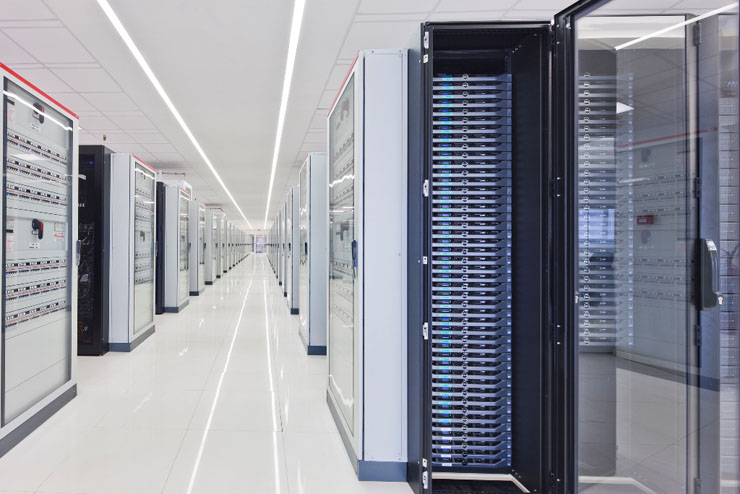But are artificial intelligence and digital green or not?

Given the enormous water consumption of artificial intelligence, is the digital transition destined to clash with the ecological transition? Sergio Giraldo's article
How green is digital. Actually no. Counter-order, comrades, the green flag will not triumph. Busy singing about the magnificent and progressive fortunes of the so-called artificial intelligence (AI), the natural intelligence of most people has fallen asleep, or pretends to sleep, not seeing the environmental cost of the new toy. Specifically, we are talking here about ChatGPT (OpenAI software, in turn owned by Microsoft) and the consumption of drinking water , but in general this concerns the data centers of large web companies. The huge warehouses of hardware that run at maximum speed to provide computing power to increasingly complex and increasingly heavy software (ChatGPT or others in development) by giants like Google.
WHAT THE SHAOLEI REN STUDY SAYS (UNIVERSITY OF CALIFORNIA)
It is a very serious study by an American researcher, Shaolei Ren of the University of California, that sounds the alarm on the environmental cost of data centers dedicated to artificial intelligence. The study, subjected to peer review and to be published next December, shows that to work, ChatGPT "drinks" half a liter of water every time you ask it 5 to 50 questions or suggestions. The number also varies greatly, depending on the geographic location in which the servers are located and the season, that is, ultimately, the amount of water needed to cool the machines that process the software.
THE ENERGY AND WATER CONSUMPTION OF ARTIFICIAL INTELLIGENCE
The increase in the consumption of energy and drinking water by the enormous air-conditioned warehouses used to store working computers is in the numbers that the leading companies themselves declare. Microsoft, which presents the values in its annual environmental report, declares global water consumption of 6.4 million cubic meters of water in 2022. A clear +34% compared to 2021, when the company consumed 4.7 million. An increase in consumption of natural resources linked almost exclusively to the increase in computing capacity necessary for ChatGPT to train and learn.
Not bad, for being at the forefront of the energy and digital transition. Google also reported a 20% increase in water consumption over last year, largely due to the expansion of its artificial intelligence efforts, Ren says.
WHAT MICROSOFT DOES
OpenAI uses three data centers in West Des Moines, a suburb of Des Moines, Iowa (USA). A city and a state chosen not by chance by Microsoft. First of all, the climate in Iowa is moderately temperate, so cooling needs are less than in the Southern states and California. This is where Microsoft has been stockpiling servers in three large warehouses for more than a decade, with two more data centers under construction, due to open later this year. In recent years, Microsoft has poured rivers of dollars into the city in order to have space, land and water for its data centers, on the edge of the extensive corn fields.
In exchange for the use of water and land, Microsoft has built infrastructure for the city and pays rich taxes that benefit the municipality. Apparently, it would make sense to have artificial intelligence models work in a single geographic location, due to the huge amount of data involved. Microsoft, through president Brad Smith, said it built the two new advanced AI computing centers in Iowa for the sole purpose of training the advanced model, GPT-4.
Given the climatic conditions, in Iowa the server farm cooling system draws water from the aqueducts when the temperature rises above 29 degrees, therefore only in summer. However, this is a lot of water. In 2022, the three server farms in Des Moines alone would have taken 6% of all water, a consumption that could double this year, with the two new data centers. The city's local water company said that it, together with the municipality, will authorize new data center projects only if measures are taken to reduce water consumption.
The issue of water intensity in data center operations is not new, but it is talked about very little. Already since 2020, in Oregon, in Wasco county, land of orchards and farms, Google's data centers have come under fire for enormous consumption of water for cooling. Having acquired the land where a foundry stood, with the purchase Google secured the rights to withdraw up to 3.9 million liters of water per day, a huge amount potentially taken away from agriculture. In Las Vegas, Google's water consumption doubled in a year, raising alarm in a city in the middle of the desert.
To cut water costs in its data centers, Microsoft is experimenting with a storage facility on the seabed, off the coast of Scotland.
The aporias of the green and digital transition intersect, in this case, to show, if there were still any need, how high is the pile of lies with which this transformation entirely internal to the capitalist system is told. In reality, natural resources are always at the basis of the "new" development that should revolutionize the planet. Water is the new oil.
This is a machine translation from Italian language of a post published on Start Magazine at the URL https://www.startmag.it/innovazione/intelligenza-artificiale-consumo-acqua/ on Sat, 30 Sep 2023 05:11:37 +0000.
